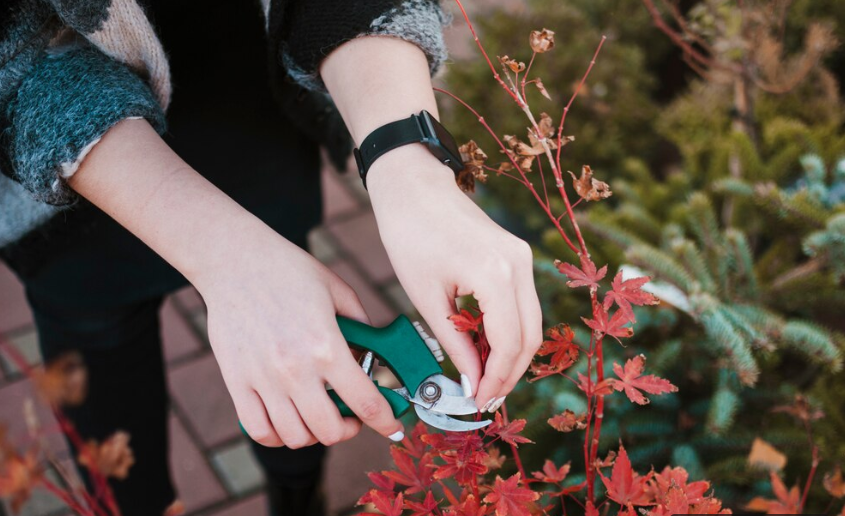
Want to trim your maple tree and confused about when to do it? Well, the best season is late winter to early spring. Why so? Because during this period your tree is deep asleep, meaning its dormant. Your tree can handle cuts better rather than bleeding sap all over your driveway. In this mini guide, we will tell you exactly when you should prune your trees and keep your maple looking amazing all year long.
Best Time to Trim Maple Trees
Trimming your maple tree at the right time isn’t all about just making it look neat. It affects your tree’s long-term health and makes you resistant to disease.
Why Late Winter is the Perfect Time
Late winter typically from February or early March is the prime time to prune trees. Your tree is still dormant, which means:
- It is not actively growing.
- Sap flow is low.
- Wounds heal faster.
- Pests and diseases are less likely to invade.
In this season, your tree is asleep. So it won’t feel the cuts as much and will recover fast before springs arrive, thereby preserving the tree’s energy.
Trimming in Early Spring Before Buds Break
If you miss late winter, you’ve still got time for a small window in early spring. Just make sure you prune before the buds swell or open up. This is important because if the buds open the sap will follow. Then, cutting branches will cause the maple sap to bleed more.
This is not fatal for your tree. But it’s not an ideal situation for trees and makes it messy, especially if you have a sugar or a red maple tree
What Happens If You Trim at the Wrong Time?
Let’s say you get out there in October or in the heat of July. It is a bad idea. Because:
- Fall trimming opens up wounds. Just before winter sets in, fungal spores will spread everywhere.
- Summer trimming during peak heat can stress the tree. During this season, the tree is already working to stay hydrated.
- Sap bleeding from spring or summer cuts can attract insects and diseases
How Tree Age Affects Pruning Time
Not all maples are created equal. A young maple needs training and shaping. While an older one needs far less intervention.
Pruning Young Maple Trees
Young trees should be pruned annually or every other year.
Why?
- To establish a strong central leader (main trunk).
- To remove weak or crossing branches early.
- To prevent structural issues later on.
Light pruning is best. Do it in late winter or early spring for best results. Such smaller trees cannot survive heavy cuts.
Trimming Mature Maple Trees
Mature maples especially those that are over 10-15 years old, don’t need much pruning unless:
- There is dead or damaged wood.
- The branches are rubbing or hanging low.
- There’s storm damage or decay.
Such trees are structurally formed and if too much trimming is done, they can go in shock and cause unnecessary bleeding. If you have a large tree, do not risk your safety and call an arborist for a professional service.
What Tools Do You Need for Maple Tree Trimming
Now that you know when, let’s talk about how? To prune a maple tree, you need the right tools and equipment to do it safely.
Tools to have:
- Bypass pruners for branches under ½ inch thick.
- Loppers for branches up to 2 inches thick.
- Pruning saw for anything thicker.
- Pole pruner if you want to reach for high branches.
- Disinfectant spray or rubbing alcohol to clean your blades.
You don’t want to spread fungi or viruses between cuts.
Tool Safety Tips
- Always wear gloves to protect your hands.
- Use eye protection as debris can fly.
- Make clean cuts just outside the branch collar. It is the swollen base of the branch.
- Never make flush cuts. As they don’t heal properly and invite disease.
Signs That Your Maple Tree Needs Pruning
Just because it’s pruning season doesn’t mean your tree needs a trim.
Check out these signs before trimming your trees:
- Dead or Broken Branches
This is the most obvious one.
Dead wood:
- Doesn’t grow leaves
- Looks brittle or hollow
- Most likely to fall off in storms
Rubbing or Crossing Branches
Branches that cross and rub can wound each other.
These open wounds are entry points for:
- Fungus
- Bacteria
- Pests
Fix this early in younger trees so don’t end up with structural issues.
Crowded Canopy or Too Much Shade
A thick canopy blocks light from reaching the inside of the tree.
This causes:
- Poor air circulation
- Mold and mildew
- Weak inner growth
This does not improve sunlight and airflow especially if you have sugar maples.
Water Sprouts or Suckers
These kinds of branches grow faster. They shoot up vertically and steal energy from main limbs that can be cut off quickly. Check them near the base or on large limbs.
Sap Bleeding Out of Season
If your tree is leaking sap outside of early spring, then it could be in stress. Or you can even have it trimmed in the wrong condition. Check nearby cuts for signs of rot or bug activity.
Common Maple Tree Trimming Mistakes
So, if you have decided to trim your trees, go through these mini-guidelines to avoid harming your tree!
Over-Pruning or “Topping” the Tree
Cutting too much at once is not good.Topping slices off big chunks from the top, thereby stressing the tree.
It can:
- Expose bark to sunscald
- Invite diseases
- Permanently disfigure the tree
Only trim 25% or less of the canopy in one season for best results.
Pruning in the Fall
Fall might look like a good time. During this season, leaves drop and branches are visible but surely it is one of the worst seasons to prune.
Why?
- Fungi are more active
- Cuts won’t heal well before winter
- The tree is focused on storing energy, not rebuilding
So, avoid it unless you’re removing hazardous branches.
Using Dirty or Dull Tools
Dirty tools spread infections like verticillium wilt. It is a fungal disease that’s deadly for maples tree. So, if you use dull blades, they can cause ragged cuts. This won’t heal your cuts at all. Always disinfect your tools between trees (rubbing alcohol works), and keep them sharp.
Making Flush Cuts
Cutting a branch flush with the trunk damages the “branch collar.” This area has special cells that close the tree wounds. So, make the cut outside the collar to avoid harming the tree.
Trimming During Sap Season
Pruning while sap is actively flowing (early to mid-spring) causes messy bleeding. This wastes the tree energy and attracts insects. While it is not deadly, it will be best to beat the sap with late winter pruning, or wait until it stops flowing.
Final Thoughts: Don’t Let Timing Kill Your Tree
Maple trees are tough but bad timing can do real damage. Always remember that late winter is the best time to prune your trees. So, don’t trim too much at once and use clean cuts. Your tree will thank you. Seeking a professional to trim your maple trees? NYC Discount Tree Experts is your best choice. Our arborists are passionate about trimming maple trees and making them thrive in your landscapes. So, partner with our team today and enjoy a hassle-free experience with your greens without killing them.

